Graham crackers are super versatile, making delicious s’mores and graham cracker crusts for desserts like key lime pie or cheesecake bars. But most store-bought versions are pretty underwhelming when you eat them solo. Not so with these homemade treats!
My homemade graham cracker recipe yields a batch of buttery, cinnamon-y treats with the perfect amount of crunch and a deep flavor from whole wheat flour. Pair them with homemade marshmallows and you’ve just taken s’mores to a whole new level!
Table of Contents
Key Ingredients
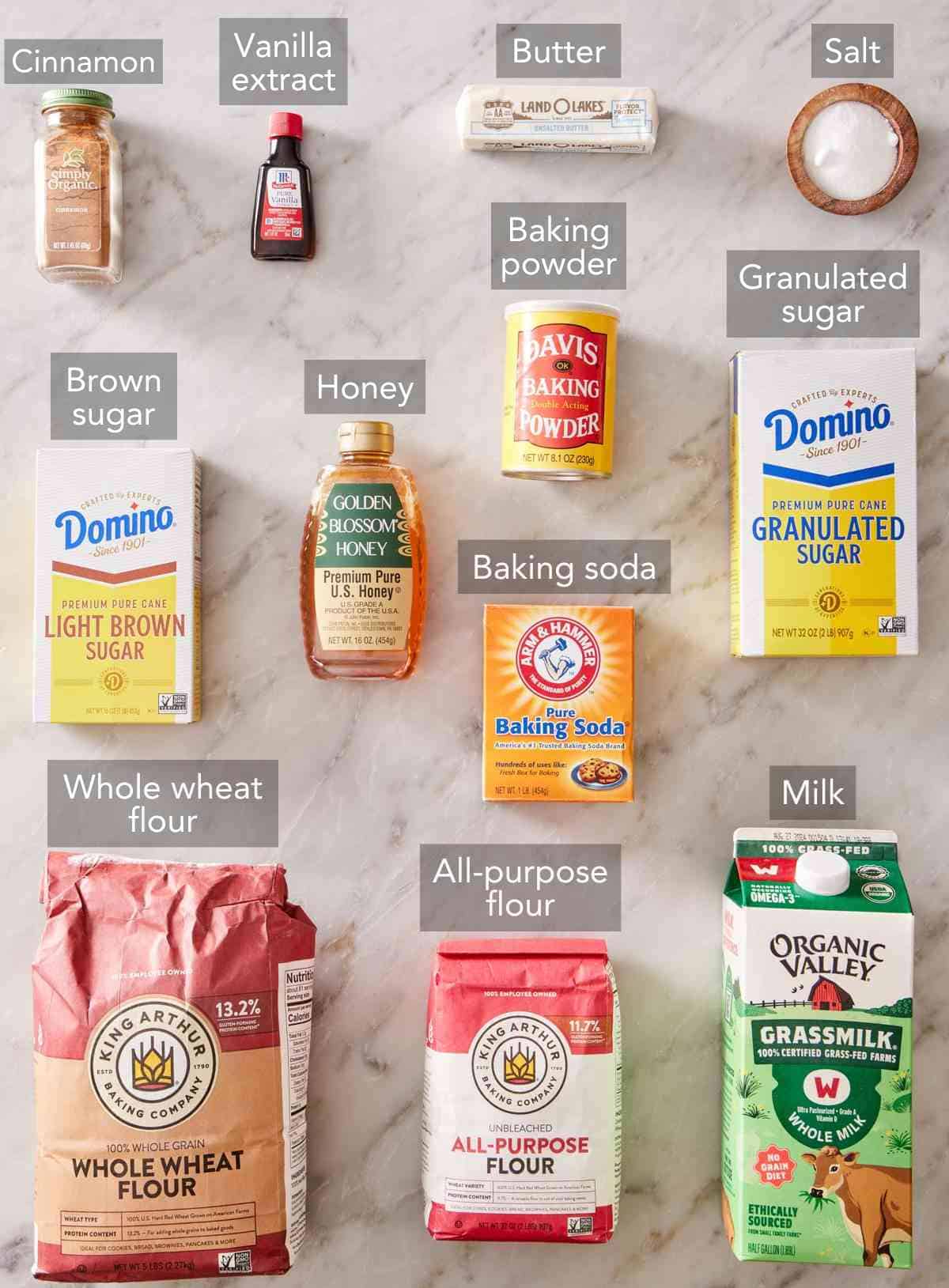
These are the main ingredients needed to make graham crackers. The full list of ingredients, along with measurements, is in the recipe card below.
Whole-wheat flour and all-purpose flour — whole wheat flour is essential to giving graham crackers their classic taste. Using it along with all-purpose flour offers the ideal balance of flavorful nuttiness and tenderness.
Light brown sugar and granulated sugar — brown sugar adds caramelly-sweet flavor while white sugar helps achieve a crunchier texture. Only have white sugar? Learn how to make brown sugar with just 2 pantry staples!
Unsalted butter — butter adds richness of flavor, but salted versions vary widely in terms of saltiness. Starting with unsalted butter ensures consistency across batches! If you forgot to bring your cold butter to room temperature in advance, here are my favorite ways to soften butter quickly.
Honey — this slightly floral sweetener is such a common choice for graham crackers, it’s even in the name of America’s most popular brand! You’re welcome to swap in maple syrup or slightly bitter unsulphured molasses if you prefer a less-sweet flavor profile.
Ground cinnamon — this warming spice adds that touch of familiar flavor from the boxed version.
Whole Wheat Flour vs. Graham Flour
Graham flour and whole wheat flour are similar, but they’re not quite the same. Graham flour is a type of whole wheat flour that’s more coarsely ground and processed a little differently—it keeps the wheat germ and bran separate during milling before recombining them, which gives it a slightly nuttier flavor and creates the classic rustic graham cracker texture we all know and love.
Regular whole wheat flour, on the other hand, is ground more finely but is easier to find in most grocery stores, which is why I chose to use it in this graham cracker recipe. It offers a very similar flavor and texture to graham flour. If you’d like to use graham flour for this recipe, use 1¼ cups (170g) in place of all of the whole wheat flour.
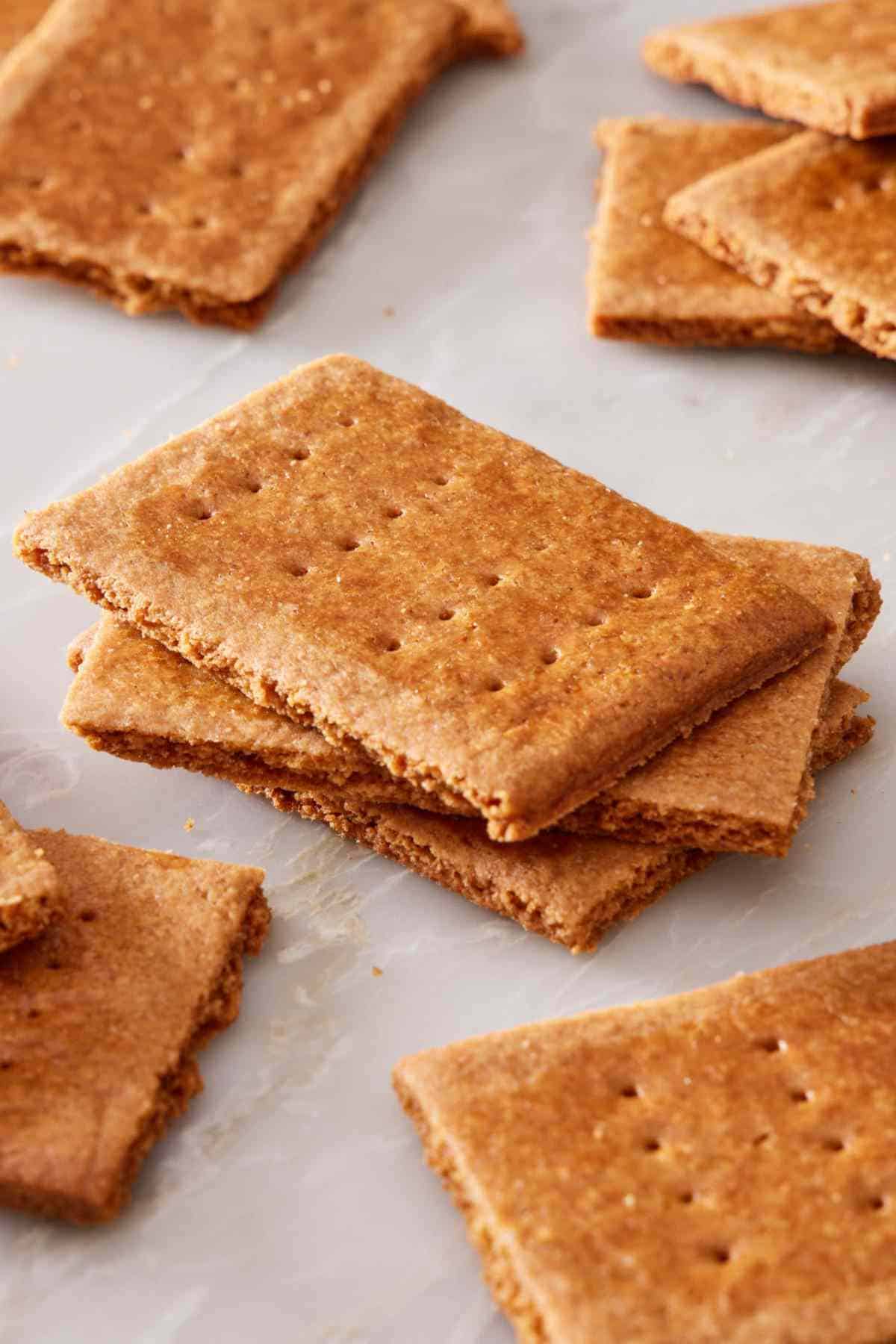
Pro Tips For Making The Best Graham Crackers
If the dough is too dry or too sticky, try these fixes. If your dough feels too dry, just splash in a little extra milk—start with a teaspoon at a time until it comes together. If it’s too sticky, dust it with a bit more whole wheat flour as you knead. Whole wheat flour can vary a lot between brands, so it’s totally normal to need slight adjustments. Pay attention to how the dough feels, and jot down the brand of flour you used and any changes you make so you’ll have a perfect starting point next time.
Roll the dough on parchment paper. Graham cracker dough is a bit soft and slightly sticky, so rolling it out directly on a sheet of parchment makes the process much easier. It helps prevent sticking to the counter and lets you transfer the entire sheet to a baking pan without tearing or breaking the dough.
Sprinkle the tops with cinnamon sugar for a flavor twist. If you’re a fan of store-bought cinnamon graham crackers, try this: mix 1 tablespoon of granulated sugar with 1 teaspoon of cinnamon, then sprinkle it over the dough after brushing it with milk.
How To Make Graham Crackers
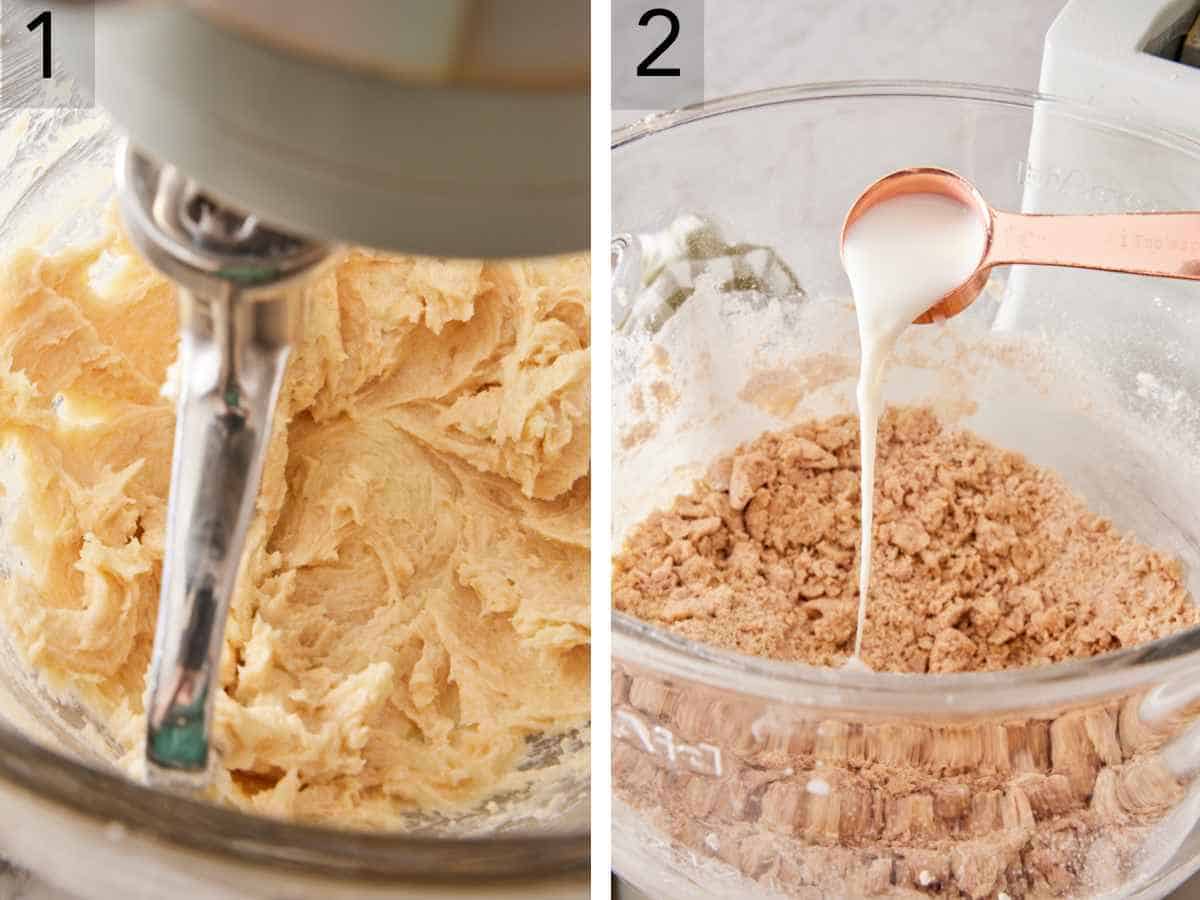
1. In a large bowl, beat the butter, brown sugar, granulated sugar, honey, and vanilla extract together with a hand mixer (or a stand mixer fitted with the paddle attachment). Beat on medium-high speed until the mixture looks creamy and slightly lighter in color. Don’t forget to pause and scrape down the sides of the bowl as needed.
2. In a medium bowl, whisk together the whole wheat flour, all-purpose flour, salt, cinnamon, baking soda, and baking powder. Now, add the dry ingredients to the butter mixture in two batches, mixing at medium-low speed after each addition. The dough will likely look a bit dry and have coarse crumbs at this point—that’s totally normal. Use your hands to knead the mixture right in the bowl about 5 or 6 times, just until it comes together into a smooth ball.
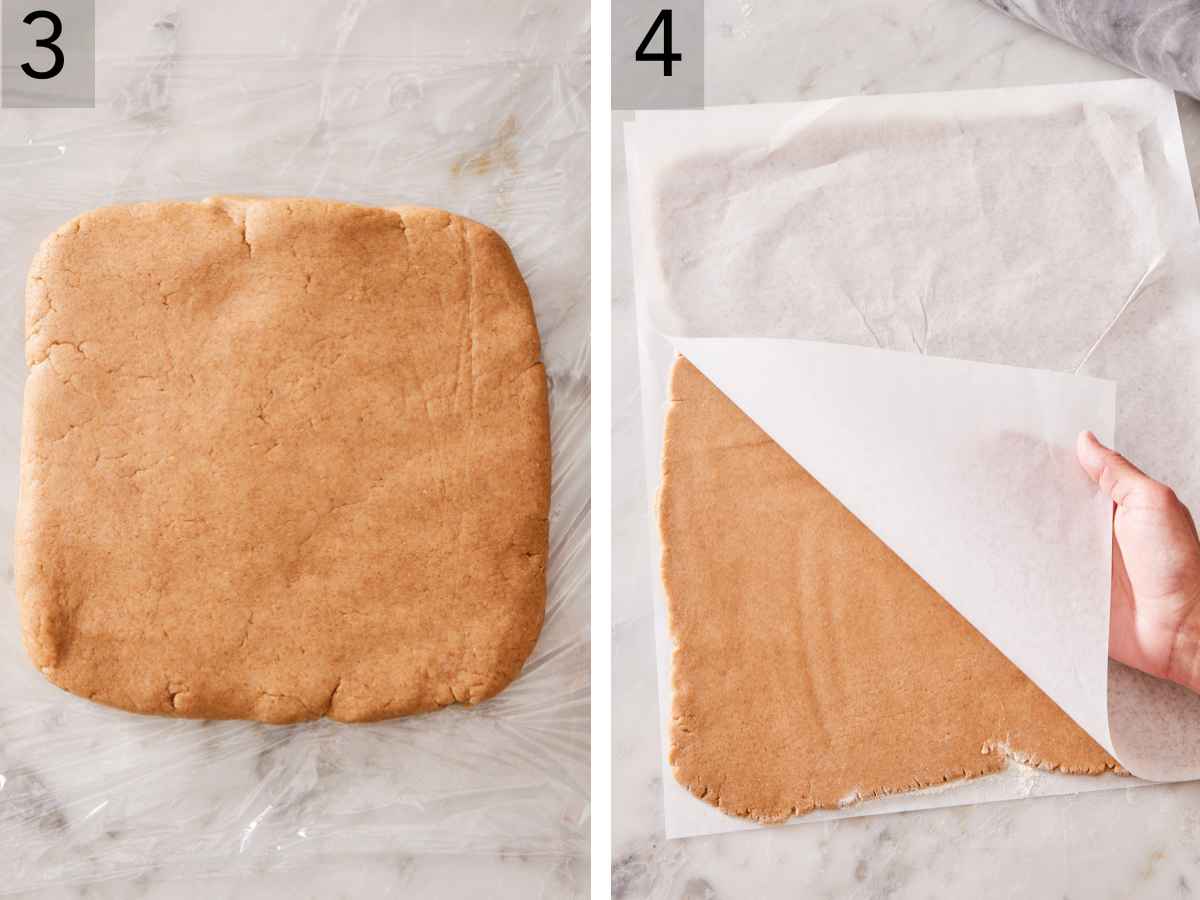
3. Transfer the dough onto a large piece of plastic wrap, shape it into a square, and wrap it up tightly. Refrigerate it for at least 1 hour or up to overnight if you want to get ahead.
4. When you’re ready to bake, lightly flour a large sheet of parchment paper and place the dough in the center. Sprinkle a little flour over the top, then place a second piece of parchment on top. Use a rolling pin to roll the dough between the two sheets until it’s about ⅛ to 1/16 inch thick. If the dough cracks while rolling, it might just be a little too cold. Let it rest on your work surface for another 5 minutes before trying again. Once rolled out, peel off the top piece of parchment.
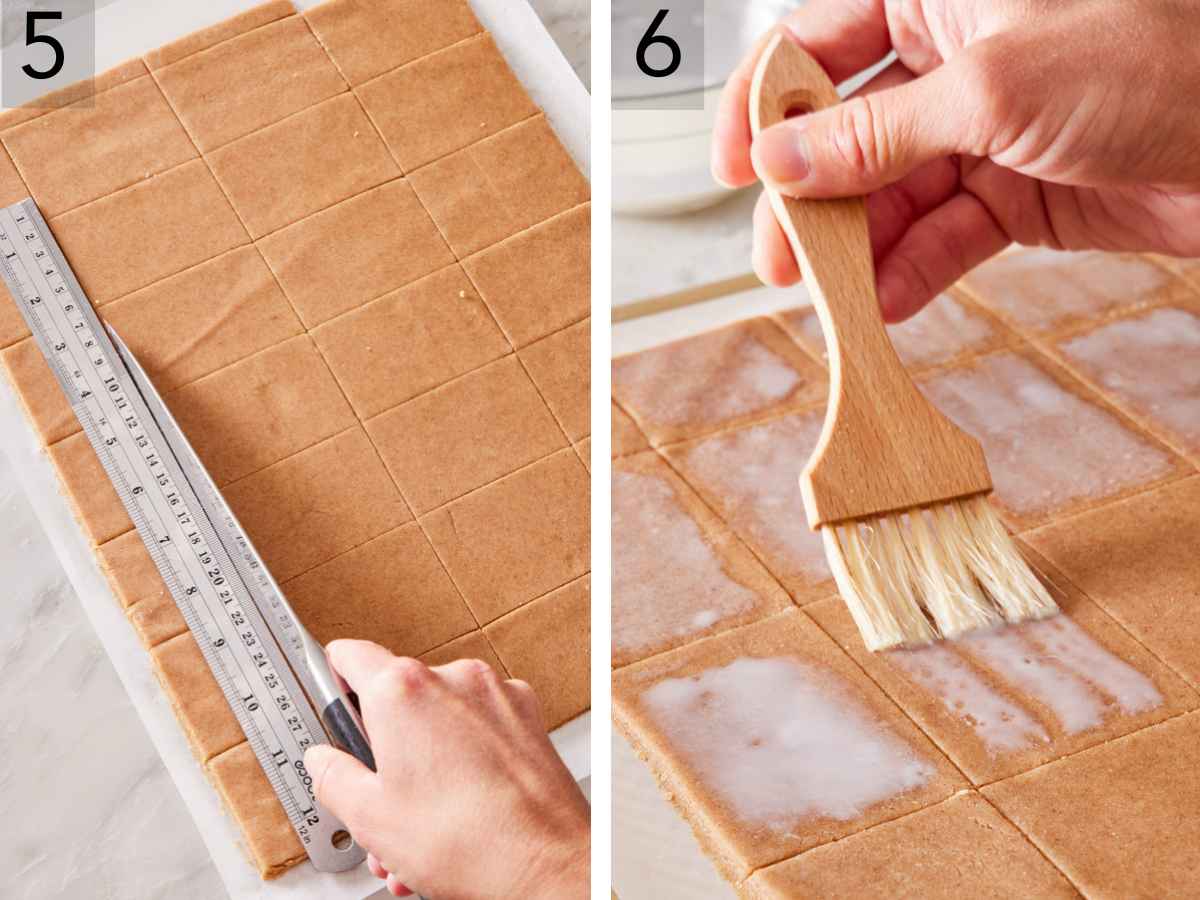
5. Use a pizza cutter or a long knife and ruler to trim the edges for clean sides, then cut the dough into rectangles or whatever size you like. Leave the cut crackers nestled together on the parchment. Slide the whole sheet (with the parchment and dough) onto a baking sheet.
6. Lightly brush the tops with milk, being careful not to smear across the cuts.
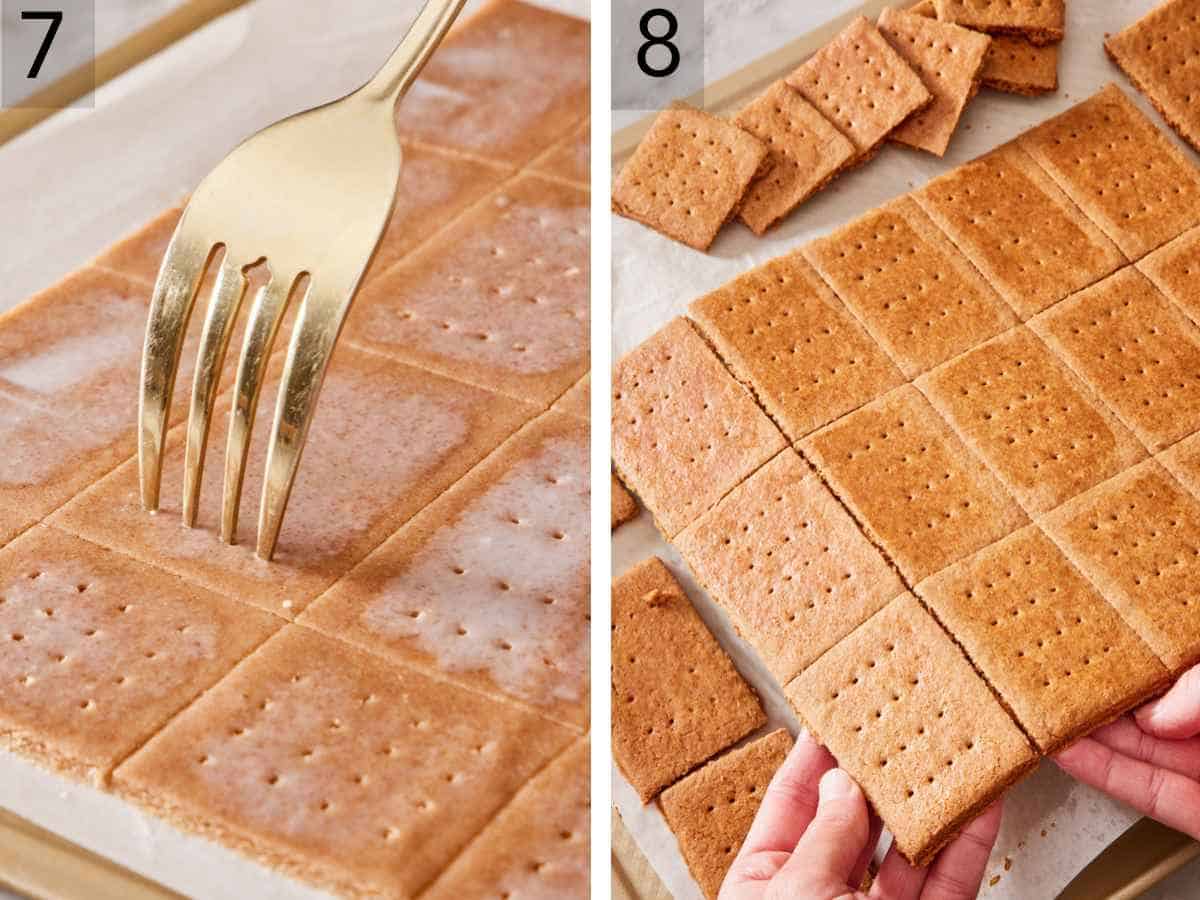
7. Use a fork to dock each cracker 3 or 4 times, depending on its size. This helps them bake evenly and gives them that classic graham cracker look.
8. Bake at 300°F for 25 to 30 minutes, rotating the cookie sheet halfway through, until the crackers are a deep golden brown and crisp. Let them cool on the pan for about 5 minutes. While they’re still warm, gently snap them apart along the lines, then transfer to a wire rack to cool completely.
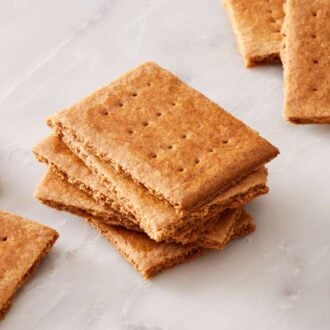
Graham Cracker Recipe
Equipment
- Parchment paper
- Half sheet tray
- Rolling Pin
- Stand mixer with paddle attachment or handheld mixer
Ingredients
- 1⅓ cups whole-wheat flour (165g)
- ⅔ cup all-purpose flour (80g)
- ½ teaspoon salt
- ½ teaspoon ground cinnamon
- ½ teaspoon baking soda
- ¼ teaspoon baking powder
- ½ cup unsalted butter softened (113g)
- ¼ cup light brown sugar (55g)
- 2 tablespoons granulated sugar
- 2 tablespoons honey
- 1 teaspoon vanilla extract
- 3 tablespoons whole milk divided
Instructions
- In a medium mixing bowl, whisk to combine the whole wheat and all-purpose flours, salt, cinnamon, baking soda, and baking powder.
- In a large mixing bowl, combine the butter, brown and granulated sugars, honey, and vanilla. With a hand mixer (or in a stand mixer with the paddle attachment), beat for 2 to 3 minutes on medium-high speed until creamy and lightened in color. (Stop to scrape down the sides of the bowl as needed.)
- Add the flour mixture in two batches, mixing on medium-low speed in between each addition. After the final addition, the mixture may look crumbly. Knead it together in the bowl with your hands, 5 to 6 times, until a cohesive ball forms. (If needed, drizzle in 1 to 3 teaspoons of the milk, then remix or knead the dough until it comes together.)
- Turn the dough onto a large piece of plastic wrap and press it into a smooth, square shape, about ½-inch thick. Wrap it tightly with plastic wrap. Refrigerate it for 1 hour or up to overnight.
- Preheat the oven to 300°F. Remove the dough from the refrigerator. (If refrigerated overnight, let the dough rest at room temperature for about 30 minutes or until softened. (It should be close to room temperature but still cool when ready to roll.)
- Lightly flour a large sheet of parchment paper (12×16-inches). Place the dough in the center of the parchment paper and sprinkle flour lightly on top. Top with another sheet of parchment paper of the same size. Use a rolling pin to roll the dough between the two parchment sheets to be about ⅛ to 1/16th-inch thick. (If the dough starts to crack, it may be too cold. Let it warm up for 5 more minutes, then continue to roll.) Remove the top sheet of parchment paper.
- Using a pizza cutter, or long knife alongside a ruler, trim the four borders of the dough to have flat edges. Cut the dough into about 2×3-inch rectangles (or any size you like) leaving the crackers touching, side-by-side on the parchment paper. Slide the whole sheet of parchment paper with the dough onto a half-sheet tray. Brush the crackers with a light coating of milk, being careful not to brush over the cuts. Dock (poke holes in) each cut graham cracker with the tines of a fork, 3 to 4 times, depending on how big they are cut.
- Bake for 25 to 30 minutes, turning the pan 180° halfway through, until they are medium-dark brown in color and crispy. Let cool for about 5 minutes on the baking pan. At this point, they should be cool enough to handle, but warm enough to break cleanly along the pre-cut lines. Transfer to a wire rack to cool completely on a wire rack.
Notes
- Don’t let the sheet of crackers cool too much before breaking them apart. They should be cool enough to handle, but still warm. If they cool too much, they may not break cleanly along your precut lines.
Nutrition
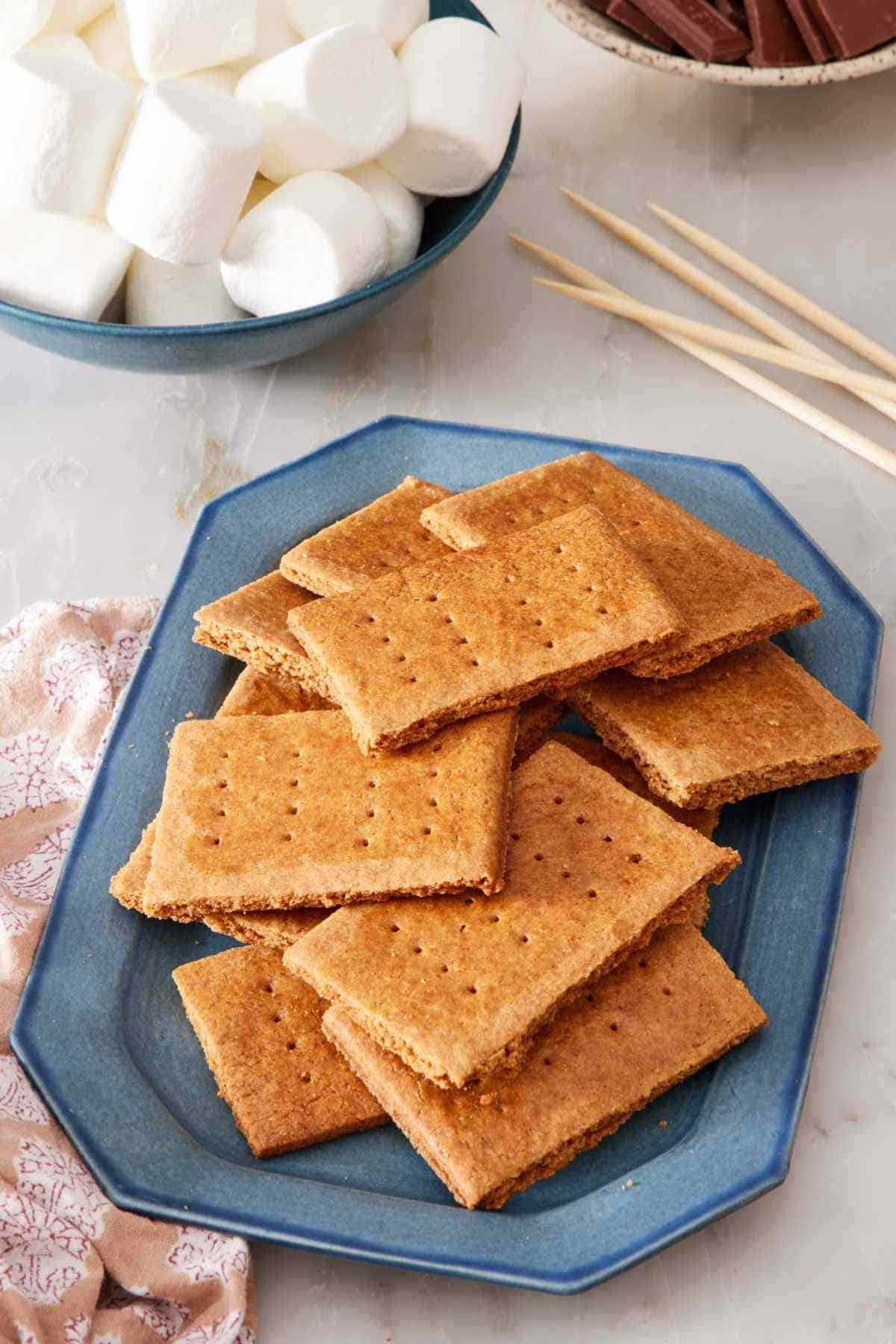
Ways To Use Homemade Graham Crackers
These homemade graham crackers can be cut into any size or shape you like. I usually go for rectangles that can be broken into classic squares—they’re just right for air fryer s’mores or building ice cream sandwiches.
You can also pulse the crackers in a food processor to make graham cracker crumbs. They work beautifully as a base in recipes like my peanut butter bars, s’mores bars, Nanaimo bars, and magic cookie bars.
These homemade crumbs also make the best graham cracker crust! Just remember to use the pinch test, as you may need more or less butter with the homemade version. If the mixture holds together easily when pinched, your crumb-to-butter ratio is spot on. If it crumbles apart, add a bit more melted butter. Or if it’s too greasy, mix in a little more graham cracker crumb.
How To Store
Graham crackers store well in an airtight container at room temperature for up to 2 weeks! They may start to soften slightly with time. Older or slightly stale graham crackers are great for turning into crumbs for use in other recipes!
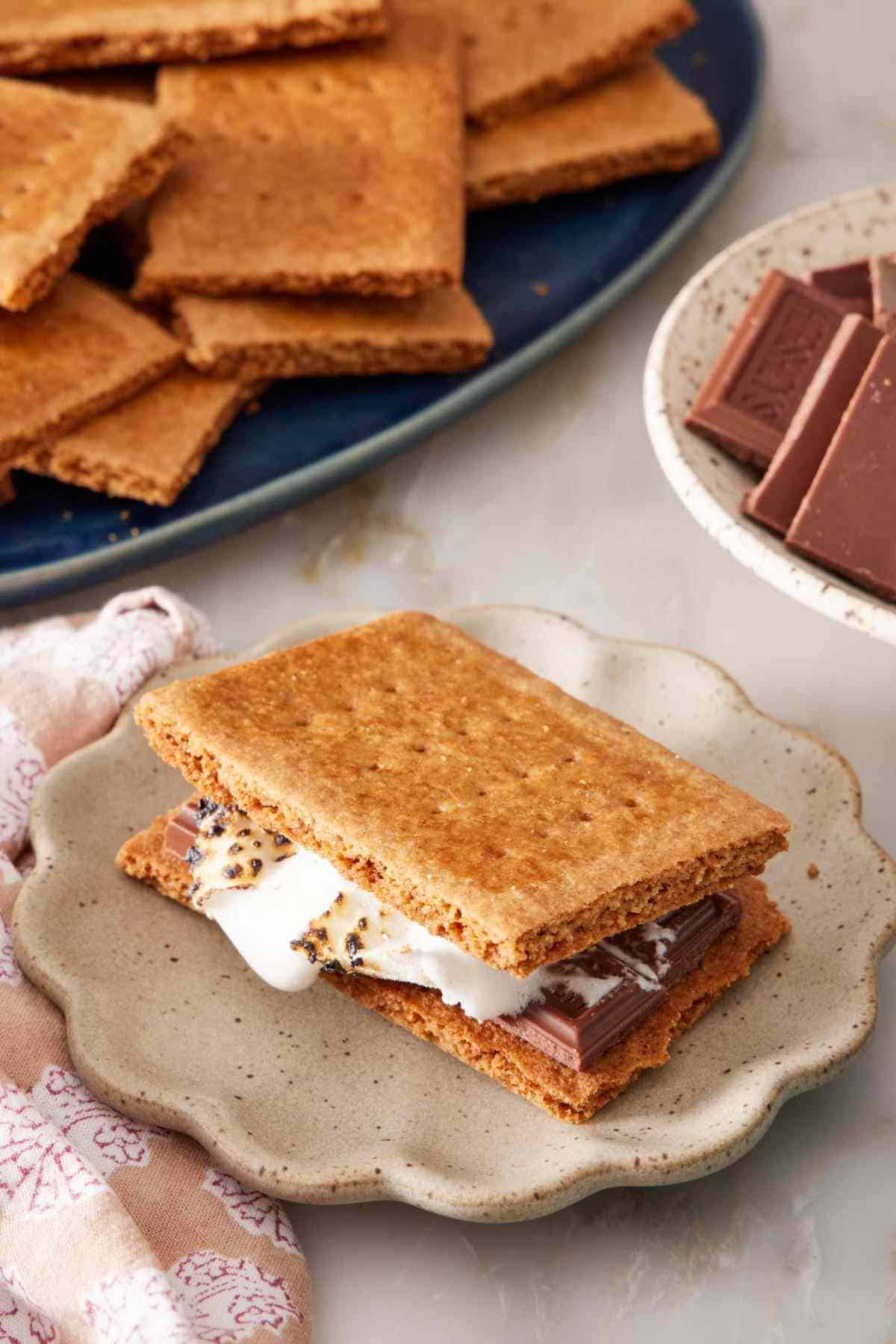
Frequently Asked Questions
If your graham crackers came out soft, it’s likely due to one of two reasons: underbaking or not letting them cool fully. They should be baked until the edges are golden brown. If you take them out too early, they won’t have time to fully crisp up. Try popping them back in the oven for 5-10 minutes to crisp up more.
Also, graham crackers continue to firm up as they cool. If you try one while they’re still warm, it might seem soft, but give them time to cool completely to room temperature on the wire rack before transferring to storage. Putting them in an airtight container or wrapping them up while they’re still warm will cause condensation to form and make them soggy!
If you’ve tried this Graham Cracker recipe, then don’t forget to rate it and let me know how you got on in the comments below. I love hearing from you!



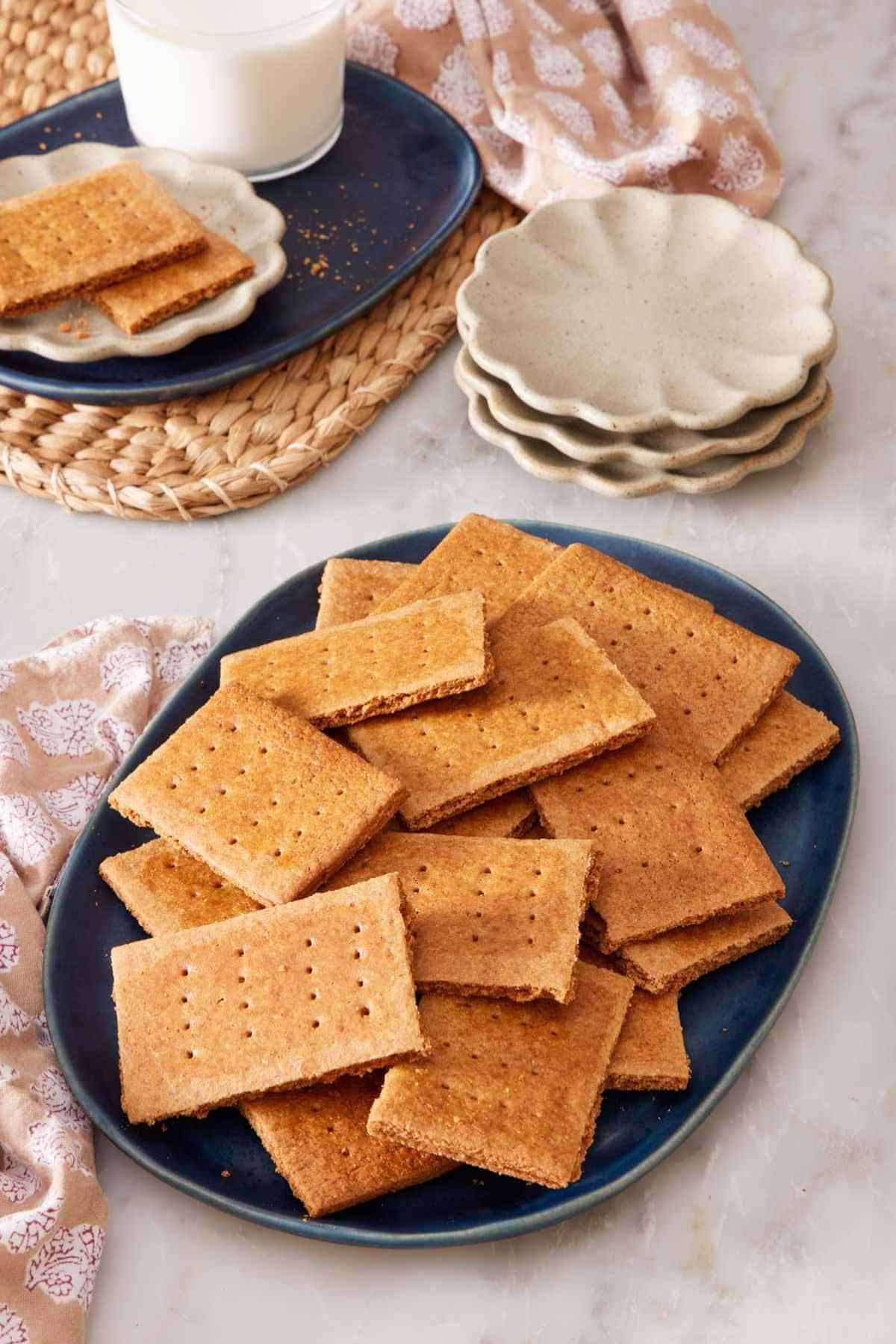
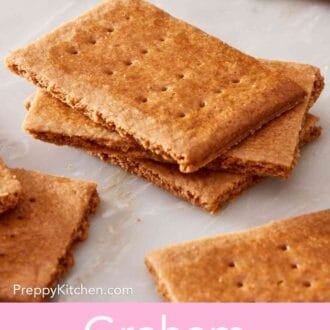
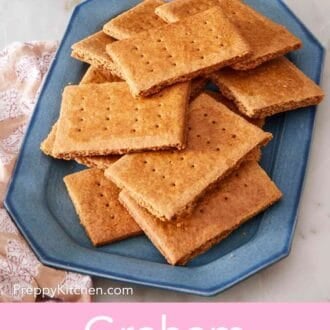
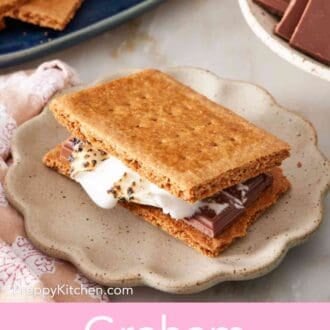
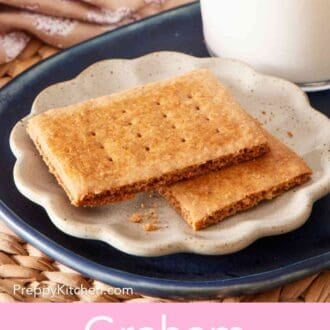
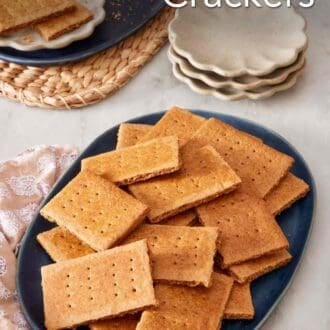
Oscar says
I live in Europe where graham crackers aren’t sold, so this recipe was a lifesaver! They turned out perfectly – crispy, lightly sweet, and just like the originals. Super useful for any recipe that calls for graham cracker crumbs.